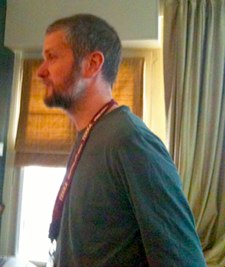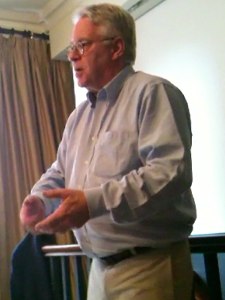Tinderbox Weekend London
Stacey Mason

After a trip overseas and an adventure of a homeward journey, Eastgate has returned from Tinderbox Weekend London.
Robert Brook, who works for UK’s Parliament, spoke on using spatial hypertext in meetings to facilitate discussion. A Tinderbox map has the advantage over slides or completed charts of giving the audience the feeling of an ongoing process. Few presenters would pause their presentation halfway through to change a slide to incorporate the audience’s ideas, and they certainly wouldn’t do it more than once.

Brook described how the screen acts as a mediator, abstracting ideas by moving the discussion from “you” versus “me” to a third party, making meetings and discussions less confrontational. This way, no single voice dominates the meeting and nobody feels overpowered.

Michael Bywater gave us a fascinating look at his use of Tinderbox as he writes a musical. A musical obeys constraints that don’t exist in other forms: you have a a limited cast, a finite production budget, and characters burst into song from time to time. The chorus provides a ready pool of minor characters, but the same actor can’t be in two places (or two costumes) at the same time. Two hundred horses can’t blaze across the stage. Smoke can’t rise from the treacle pudding.
And on top of all of this, they sing. And more precisely, they have to sing when the dramatic tension has reached such a point that they can’t do anything else.
It’s a lot to keep track of.
Tinderbox helps sort it all out by keeping track of who is where at which times, as well as plotting the dramatic tension of a given scene. By assigning a numerical value value on a 1-10 scale, Bywater’s Tinderbox can literally plot the dramatic tension of the scenes, acts, and whole musical to make sure that the intended dramatic curve is achieved.
